What's New in Gallery 350: Dogon Metalwork
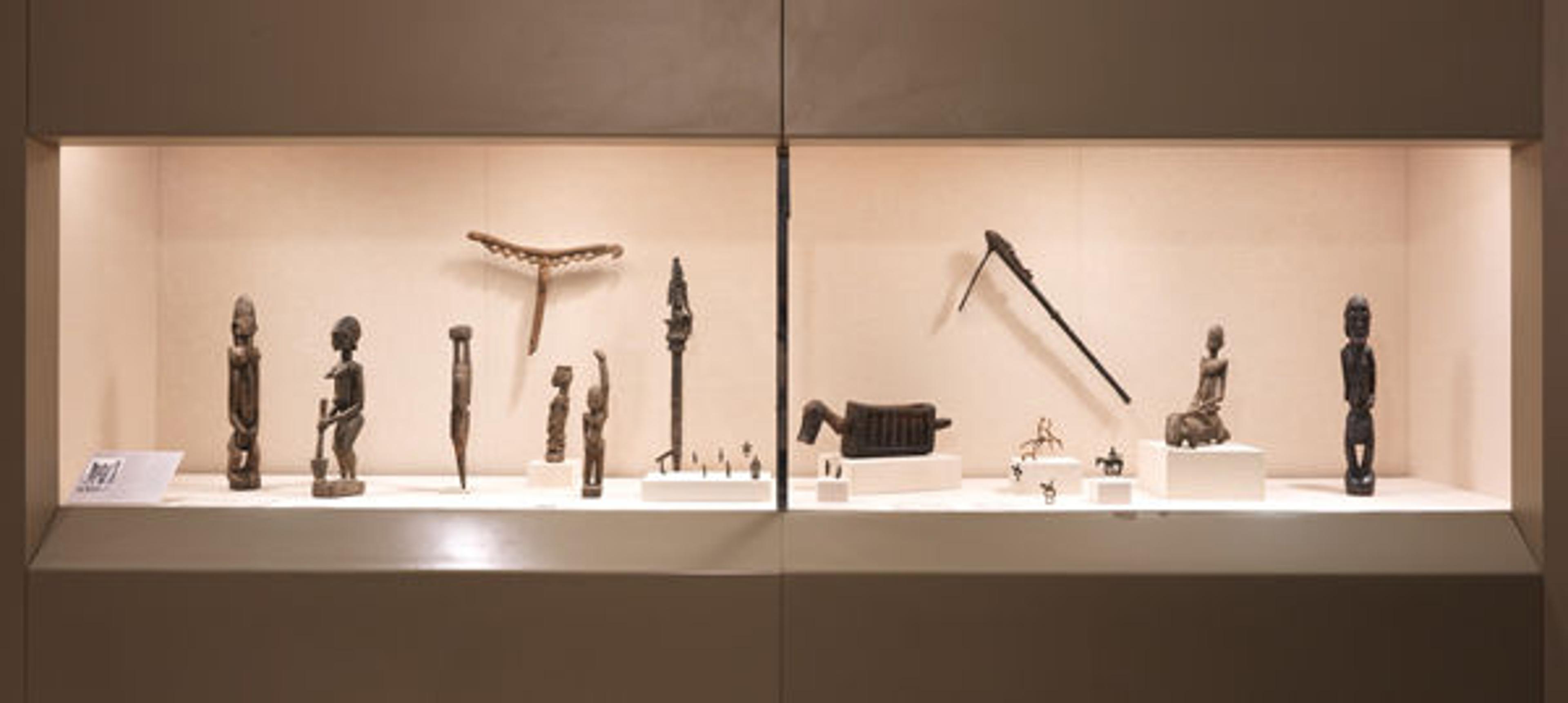
A case dedicated to Dogon art from Mali in gallery 350
«A group of fifteen iron and copper alloy miniature sculptures and ornaments has recently been installed in a wall case in gallery 350 dedicated to Dogon art from Mali. Combining three ornaments from the Met's own holdings with works selected from a private collection, this is the largest group of such Dogon miniatures ever featured at the Museum.»
Small in scale but large in personality, these amulets, bracelets, rings, and pendants deserve close examination as a significant Dogon artistic tradition.

A closer look at the case
An early twentieth-century European visitor to Dogon country in Mali wrote of the "astonishing perfection" of the ornaments created by local blacksmiths through the lost-wax process. These miniature sculptures are ritual objects placed on personal altars in order to anchor the spiritual power of the ancestor to whom the altar is dedicated. According to Dogon thought, copper shares the essence of Nommo, a mythological being that represents order, purity, fertility, and life. The fact that copper is associated with Nommo enhances these objects' ability to balance negative forces controlled through shrines and altars.
The diminutive figures present a smooth, undecorated surface and sinuous limbs, and are most often represented seated. A number of examples make the distinctive gesture of holding their hands to their faces. That gesture has been open to interpretation, but the most commonly accepted is that it might echo a specific moment in the installation ceremony of binu priests, responsible for tending to ancestral altars.

Left: Bracelet with seated figure (Dyongou Serou), 19th–20th century. Dogon peoples, Mali. Iron, copper alloy; H. 1 5/8 x W. 3 5/8 x D. 4 1/4 in. (4.1 x 9.2 x 10.8 cm). The Metropolitan Museum of Art, New York, Gift of Lester Wunderman, 1977 (1977.394.1). Right: Seated figure, 14th–19th century. Tellem or Dogon peoples, Mali. Copper alloy; H. 2 1/8 in. Lent by Arnold and Joanne Syrop (L.2013.105.1)
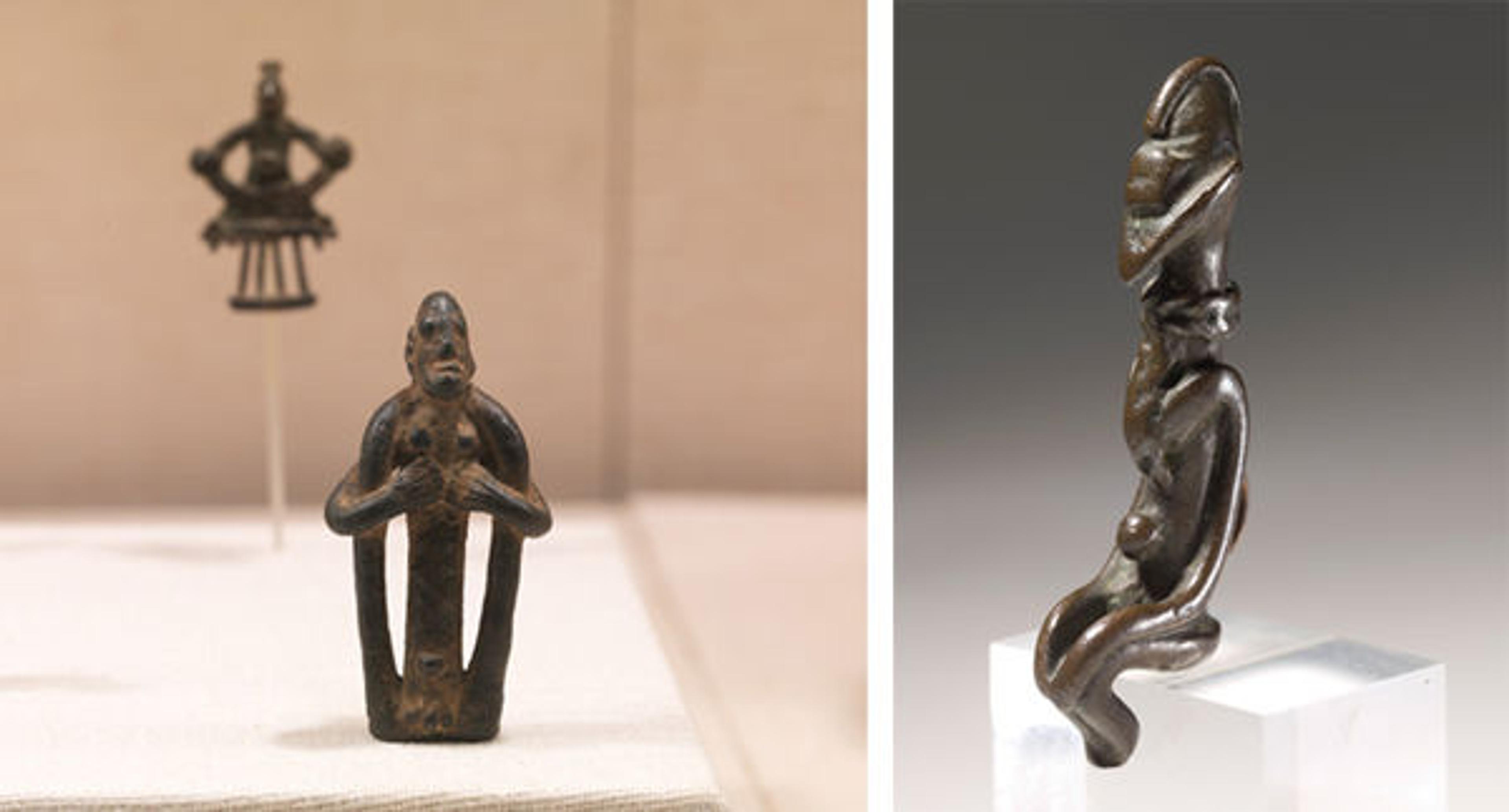
Left: Figure of a contortionist, 18th–19th century. Dogon peoples, Mali. Copper alloy; H. 3 in. Lent by Arnold and Joanne Syrop (L.2013.105.10). Right: Seated figure, 18th–19th century. Dogon peoples, Mali. Copper alloy; H. 2 1/8 in. Lent by Arnold and Joanne Syrop (L.2013.105.5). Photograph © Pauline Shapiro
Trans-Saharan Trade Networks
While copper-alloy ornaments have been created in the Dogon area for almost a millennium, exact dating of these miniatures remains largely speculative, established on the basis of stylistic analysis. Interestingly, there is no evidence of copper mining in the region. The metal may have been obtained through trans-Saharan trade networks that brought copper from Spain, North Africa, and the Sahara to commercial centers of the Sahel and Sudan.
Djenne, located only one hundred miles from the Bandiagara cliffs, was such a center. This proximity might help explain the similarities between certain Dogon copper-alloy pendants and amulets, such as these two examples, and those from the Djenne region. Here, the oblong faces, topknots, broad triangular noses, and for the female figure, its distinctive posture, evoke Djenne's sculptural tradition (see 82nd & Fifth: Bundle of Emotions).
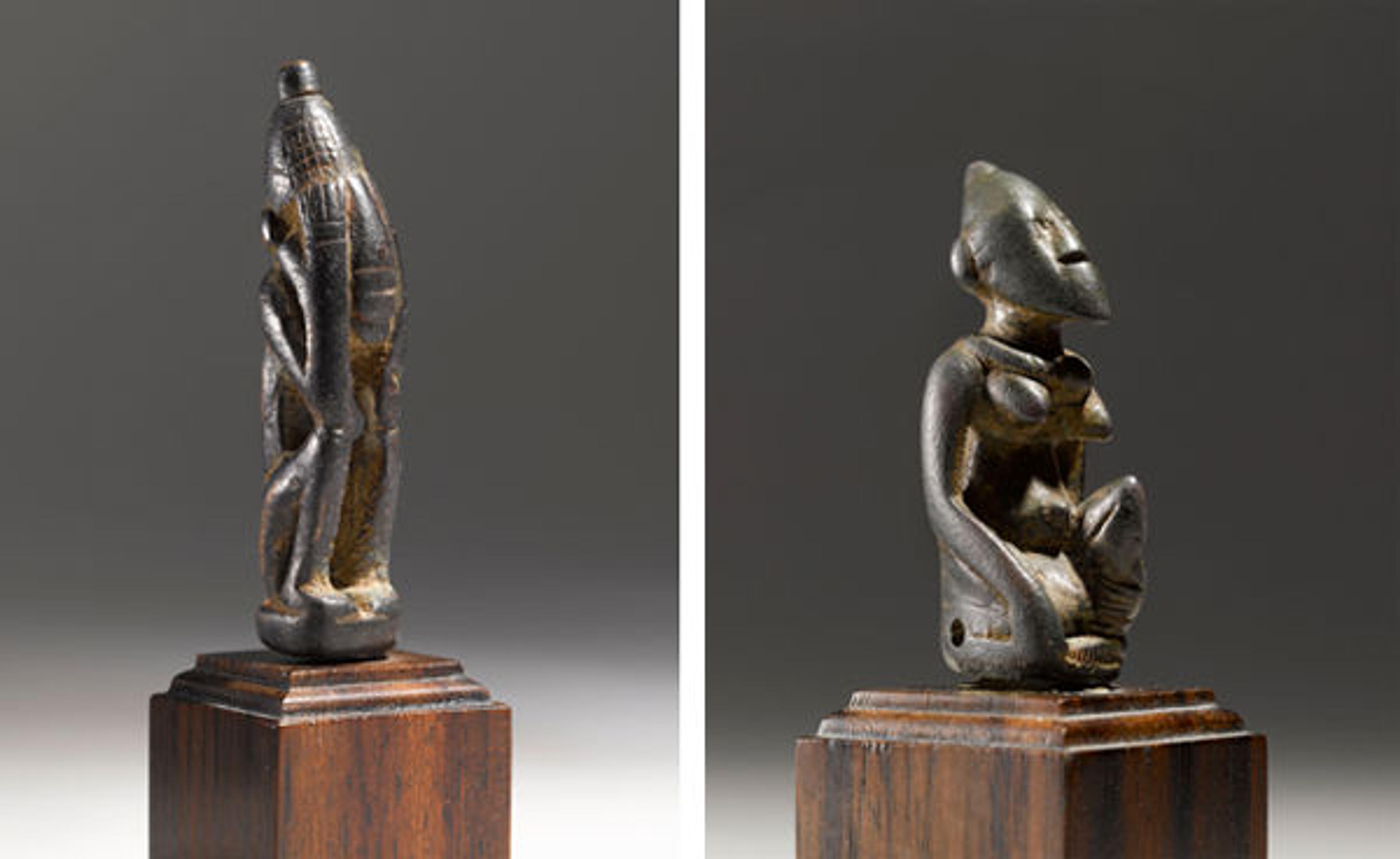
Left: Seated figure, 17th–19th century. Dogon peoples, Mali. Copper alloy; H. 2 1/8 in. Lent by Arnold and Joanne Syrop (L.2013.105.6). Right: Pendant with kneeling female figure, 16th–18th century. Dogon peoples, Mali. Copper alloy; H. 1 5/8 in. Lent by Arnold and Joanne Syrop (L.2013.105.7). Photographs © Pauline Shapiro
Horses and Riders
In the harsh landscape of the Bandiagara cliffs, the horse was an exotic creature available only rarely to wealthy merchants and chiefs. The horse occupies a privileged place in Dogon myth as the first animal to have left the heavenly ark from which the earth was populated and organized. Dogon figures depicting horses and equestrian figures reflect the prestige and power that have been associated with the horse since it was introduced to West Africa more than a thousand years ago.
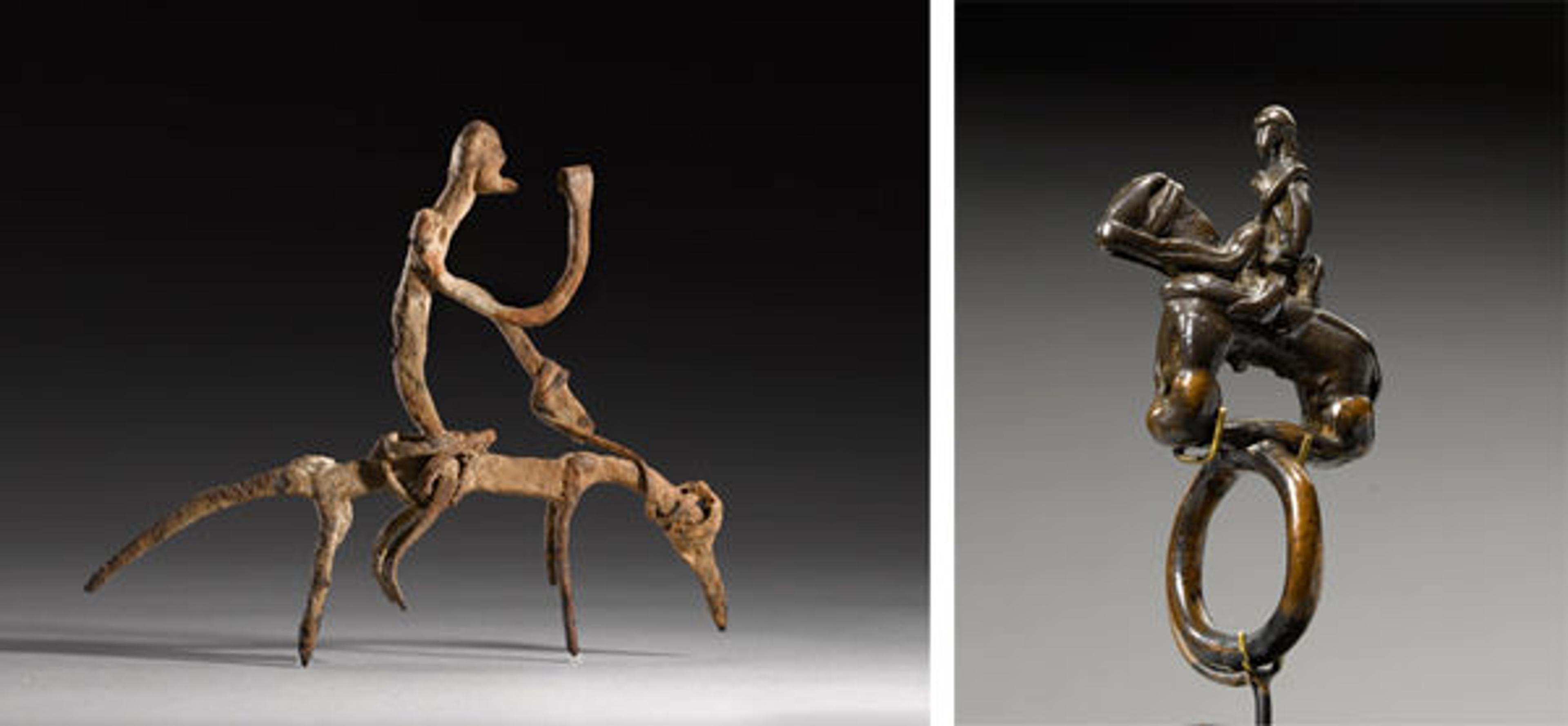
Left: Equestrian figure, 17th–19th century. Dogon peoples, Mali. Iron; H. 5 1/2 in., L. 4 5/8 in. Lent by Arnold and Joanne Syrop (L.2013.105.12). Right: Ring with equestrian figure, 19th–20th century. Dogon peoples, Mali. Copper alloy; H. 2 3/8 in. Lent by Arnold and Joanne Syrop (L.2013.105.9). Photographs © Pauline Shapiro
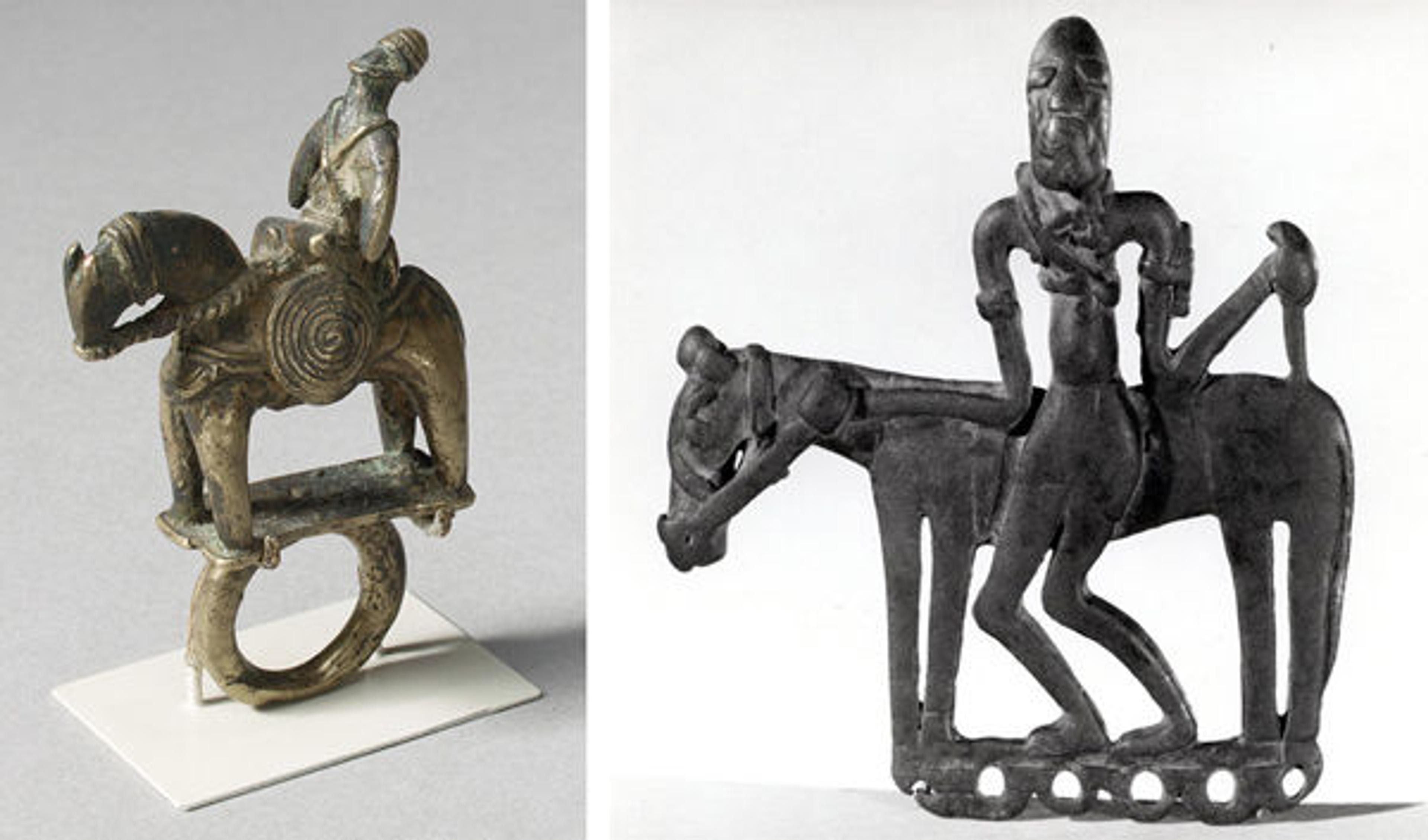
Left: Ring with equestrian figure, 19th–20th century. Dogon peoples, Mali. Copper alloy; H. 3 x W. 1 7/8 in. (7.6 x 4.8 cm). The Metropolitan Museum of Art, New York, Gift of Andre Nasser, 1981 (1981.425.1). Right: Pendant with equestrian figure, 18th–20th century. Dogon or Bozo peoples, Mali. Copper alloy; H. 3 1/4 x W. 3 5/8 in. (8.3 x 9.2 cm). The Metropolitan Museum of Art, New York, Purchase, Edith Perry Chapman Fund, 1975 (1975.205)
Yaëlle Biro
Yaëlle Biro is the associate curator in the Department of the Arts of Africa, Oceania, and the Americas.